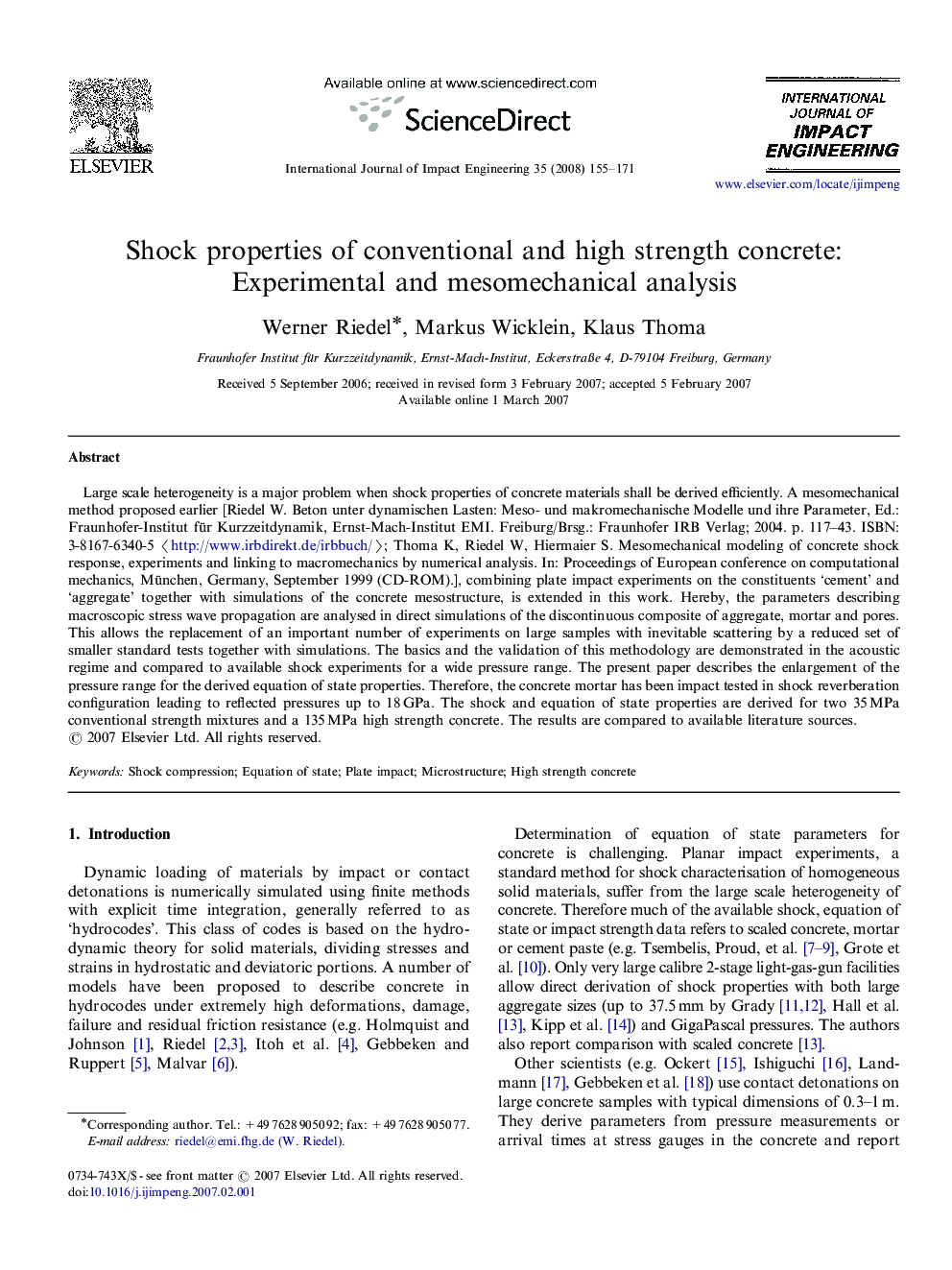| Article ID | Journal | Published Year | Pages | File Type |
|---|---|---|---|---|
| 783592 | International Journal of Impact Engineering | 2008 | 17 Pages |
Large scale heterogeneity is a major problem when shock properties of concrete materials shall be derived efficiently. A mesomechanical method proposed earlier [Riedel W. Beton unter dynamischen Lasten: Meso- und makromechanische Modelle und ihre Parameter, Ed.: Fraunhofer-Institut für Kurzzeitdynamik, Ernst-Mach-Institut EMI. Freiburg/Brsg.: Fraunhofer IRB Verlag; 2004. p. 117–43. ISBN:3-8167-6340-5 〈http://www.irbdirekt.de/irbbuch/〉; Thoma K, Riedel W, Hiermaier S. Mesomechanical modeling of concrete shock response, experiments and linking to macromechanics by numerical analysis. In: Proceedings of European conference on computational mechanics, München, Germany, September 1999 (CD-ROM).], combining plate impact experiments on the constituents ‘cement’ and ‘aggregate’ together with simulations of the concrete mesostructure, is extended in this work. Hereby, the parameters describing macroscopic stress wave propagation are analysed in direct simulations of the discontinuous composite of aggregate, mortar and pores. This allows the replacement of an important number of experiments on large samples with inevitable scattering by a reduced set of smaller standard tests together with simulations. The basics and the validation of this methodology are demonstrated in the acoustic regime and compared to available shock experiments for a wide pressure range. The present paper describes the enlargement of the pressure range for the derived equation of state properties. Therefore, the concrete mortar has been impact tested in shock reverberation configuration leading to reflected pressures up to 18 GPa. The shock and equation of state properties are derived for two 35 MPa conventional strength mixtures and a 135 MPa high strength concrete. The results are compared to available literature sources.
